
Family Fun or Turn & Run? Tackling Mixed Feelings at The San Diego Zoo
I spent my recent San Diego layover with a day trip to one of the city’s most iconic tourist attractions—The San Diego Zoo.
I had never been to the San Diego Zoo, despite spending a lot of time in America’s Favorite City. Partly because there are so many other good things to do in San Diego, and partly because ever since watching Blackfish in 2013, I have had a hard time with seeing animals in captivity.
My grandmother lived in San Diego as a child and has happy memories of her time there. Every time I mention going to SAN, she says the same things: “Have you been to the zoo yet!?” “Are you going to the zoo?” “You’ve got to go!” I’ve brushed it off and pushed it aside time and time again, but recently I decided I would go. I wanted to see for myself if it was terrible or wonderful, and I wanted this thread of connection between myself and my grandmother and her past.
In this post I’m going to give some basic information about the San Diego Zoo, an overview of my trip and how it went, and I’m going to attempt to tackle the question: Are zoos ethical places?
Another journey through my ever-evolving moral compass, but at least there are cute pictures of animals this time. And I assure you, it’s cheaper than entry to the Zoo.
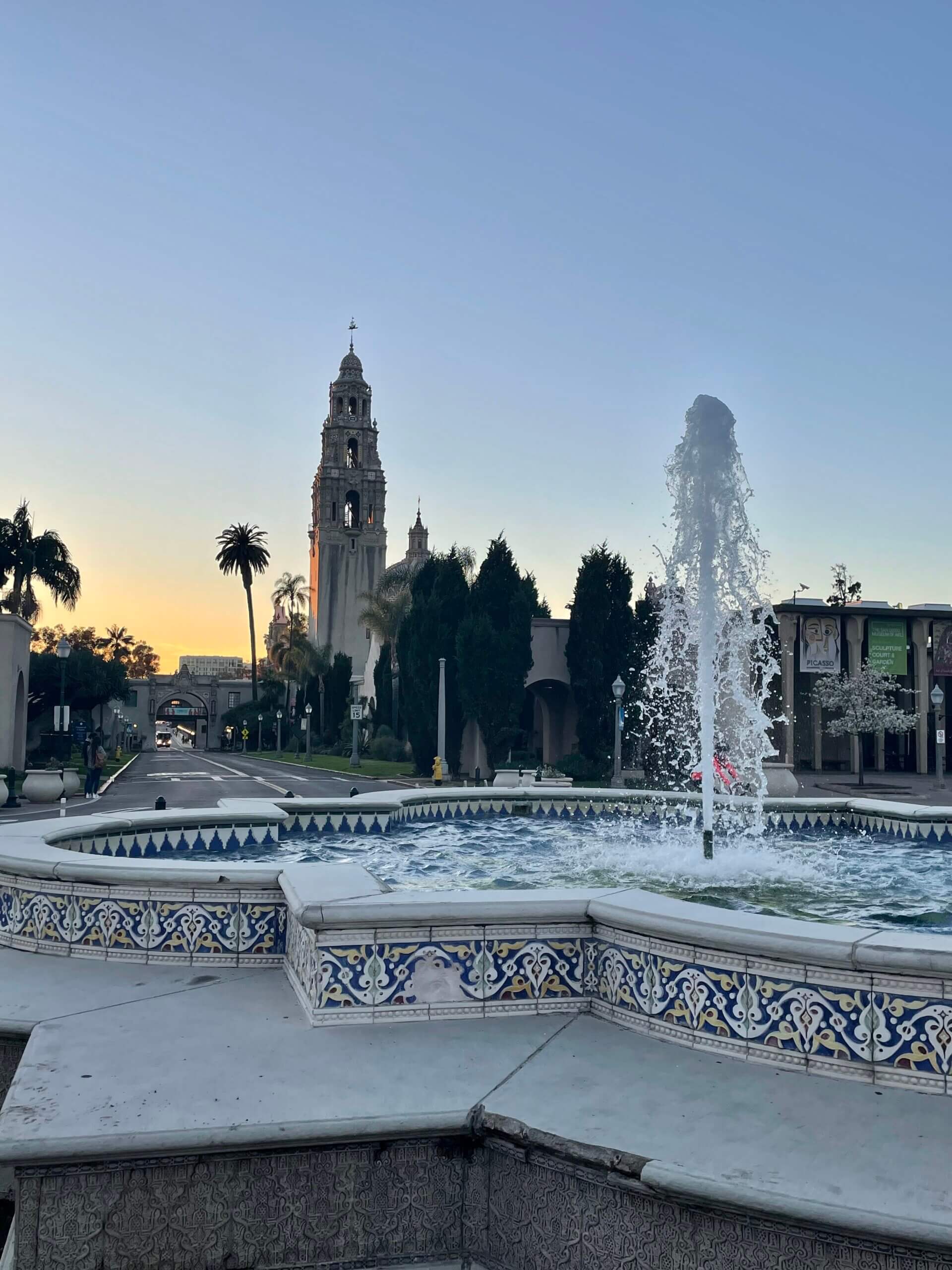
Balboa Park
The Need to Know Info
The San Diego Zoo opened in 1916 and is considered one of the best zoos in the world.
It is located in Balboa Park, just a ten-minute drive from downtown San Diego. The zoo spans 100 acres and there are more than 12,000 animals from about 650 species and subspecies. There is an affiliated 1,800-acre wildlife park called San Diego Zoo Wildlife Park in Escondido, CA, but for this post we are just talking the zoo.
Admission is not cheap, at $71 for adults and $61 for children. You can get a $2 discount by purchasing online and can get another $2 off if you buy a “value days” ticket. Value days are basically regular weekdays that are not school holidays. If you are a AAA member, you can get a 10% discount.
If you’re visiting San Diego and planning to hit several tourist attractions, it may be worth it to buy a bundle San Diego pass rather than the individual zoo entrance. There are also memberships that could save you money in the long run if you plan to visit the zoo regularly.
For more information or to purchase admission, head to Sandiegozoo.org/tickets.
The San Diego Zoo is currently open daily from 9am-5pm (February 2023), but the time varies depending on the season and day of the week. To find park hours for future dates, click this link and select the date you plan to visit.
I only had about 2.5 hours in the zoo because they were closing, and I did not get to see every animal. I didn’t even bother with the small animals like reptiles because it is a huge park and I didn’t have time. I’d recommend giving yourself 3.5-4 hours in the park if you’re an out-of-towner.
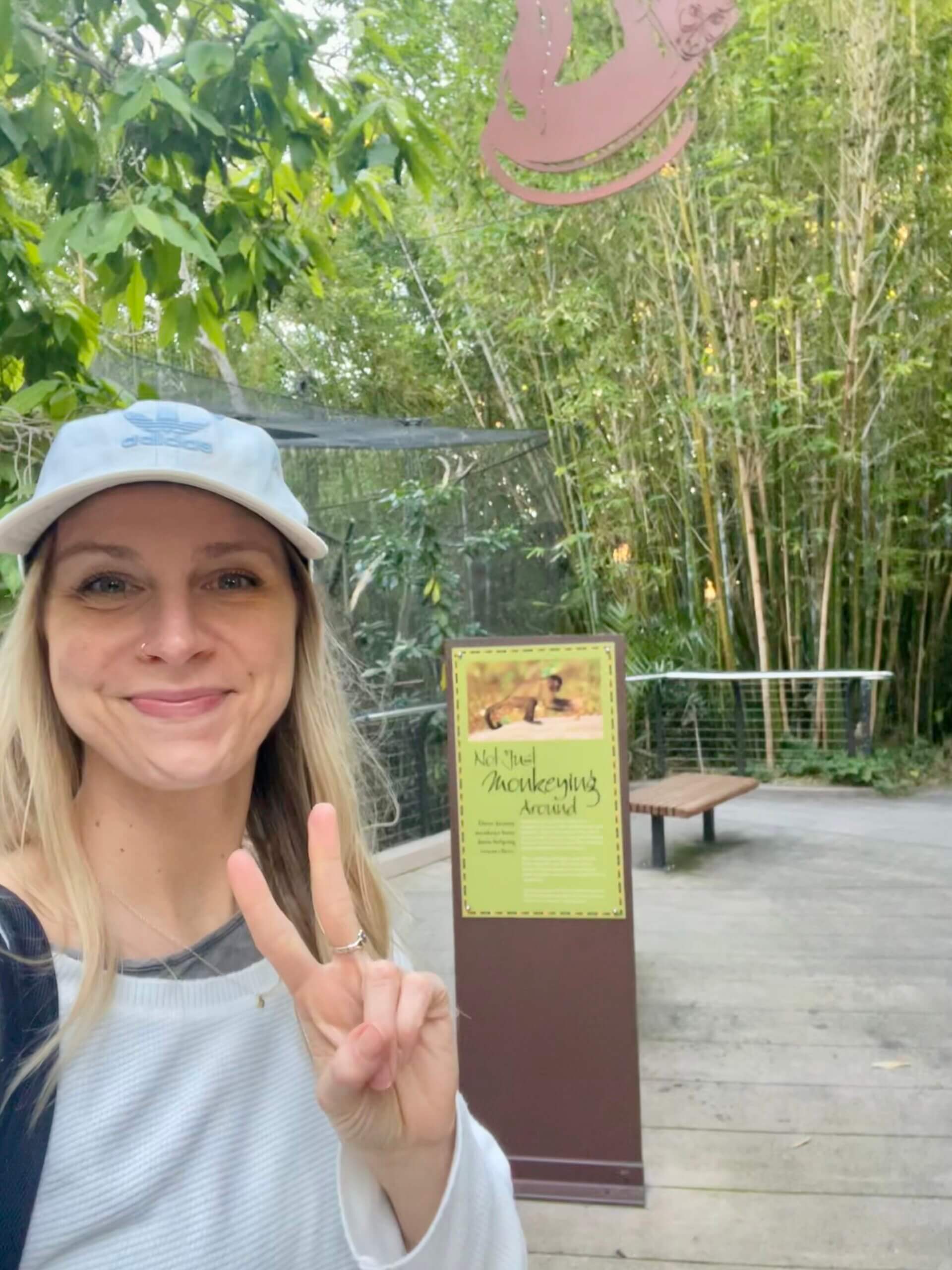
Feeling weird, but pushing on.
A Day at The Zoo
I’m trying to prioritize having fun on my layovers. Life can get so busy, and I can be so focused on the various projects I’m working on, that I forget or neglect to schedule fun. I’ve become a bit of a slam-clicker in the past few years, opting to stay inside and write, or go for a run, or catch up on sleep instead of hitting the town to explore on my layovers. What I’m shooting for now, more than anything, is balance. Sure, life is busy, but it will always be busy, and if you don’t take time out for fun you’ll never have any.
Spending a warm, sunny day in San Diego, far from the dredges of New England winter can really do wonders for how you feel about work. It’s a great little reminder of why you love your job and your life.
So, after a 4am wakeup, a drive to the airport, and a 6-hour flight from Boston to San Diego, I was ready to go. I sipped a venti iced coffee and chatted with the Uber driver on my way to the park, thrilled with the weather (65 degrees in February), and unsure what to expect.
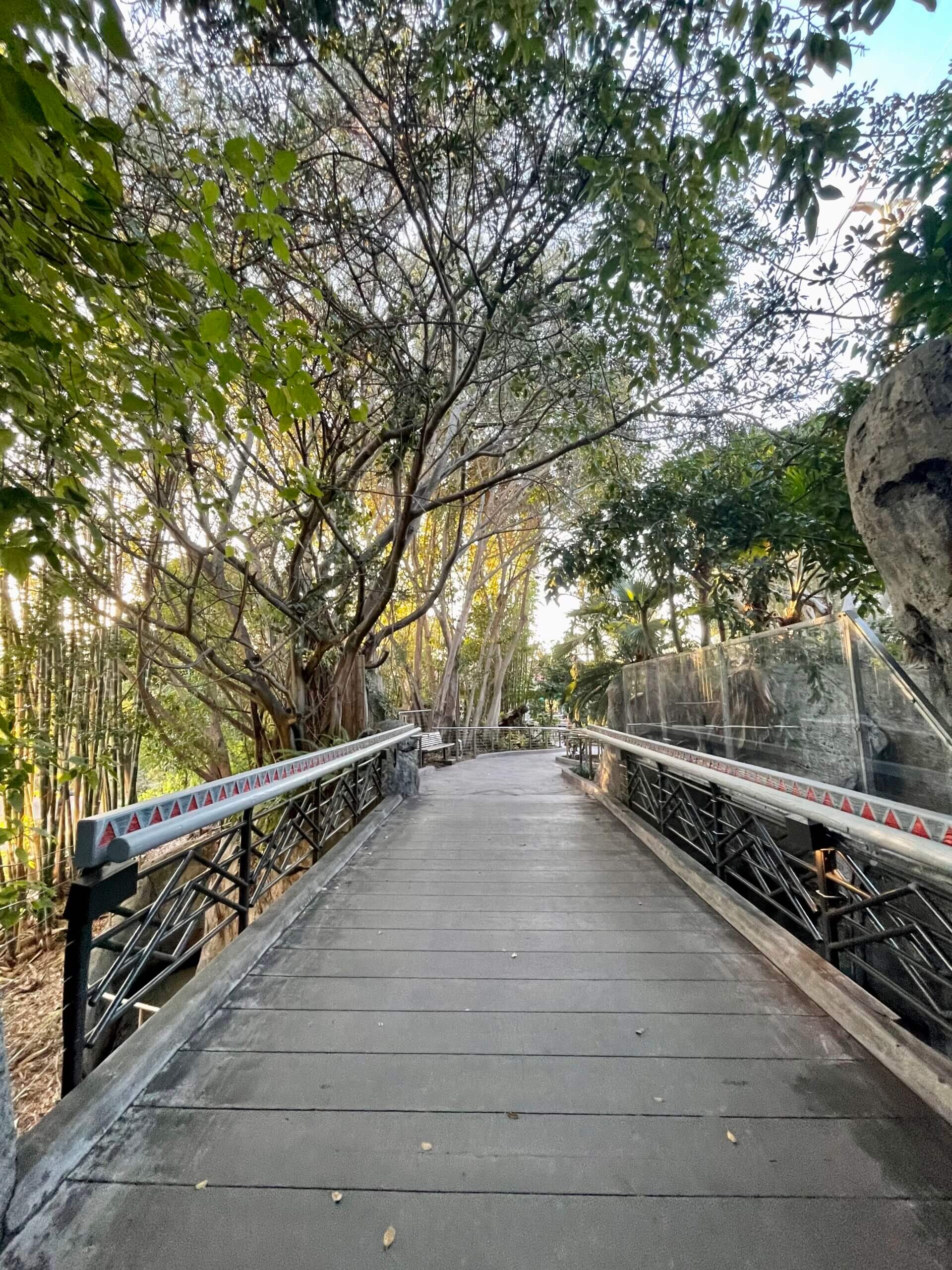
The grounds at the San Diego Zoo are impressive.
One thing I will say about this zoo is they have done a great job of making the park user-friendly. And when you only have a little time, this really matters. There is a large map to look at just inside the entrance, small paper maps you can take with you, and a mobile version. There are buses and trams to take you to different areas of the park, which is great for little ones or adults with mobility issues. I opted to use my preferred method of getting around—my feet! I mapped out the route I would take around the park in order to see most of the big animals, and got to walking.
I noticed immediately how nice the grounds are. I was walking through tunnels of trees and bushes and giant fronds that gave me the feeling of actually being in a jungle. Since it was a couple hours before closing on a weekday, it was not very crowded at the zoo. I got lots of unimpeded views of the animals and some quiet time strolling through the beautifully-maintained grounds. It was SO clean, too.
I mentioned in the intro that I have mixed feelings about animals in captivity. Because of this and where I live, it isn’t often that I see wild animals up close. (Except the dreaded park squirrels and occasional stray cat.)
I have to admit I did have some moments of wonder, especially in the beginning of my visit; Watching the monkeys interact and jump from pole to line to branch, seeing a leopard, regal, fur gleaming in the sun, taking an afternoon nap, the baboons, surely the most curiously-butted creatures, strutting around like they owned the place, beards bristling with displeasure. It was kind of amazing.
I made my way through the Urban Jungle, the Outback, and Africa Rocks. Saw hippos and koalas and giraffes. I listened to a guide talk about the plight of wild giraffes and how breeding in captivity works. (To keep from too much genetic “matching”, they swap out the male every couple years.) It made me sick to hear about the poaching and sad to hear how local economies are so devastated that people will do pretty much anything for money, regardless of damage to the ecosystem. Nothing is black and white. Except the zebras, I suppose.
I saw a cheetah in a stretch of land the length of an Airbus. It was long, in terms of zoo space. But for a cheetah, born to run, this is nothing. I was harkened back to the prologue of Glennon Doyle’s Untamed, and while the cheetah lazily licked a rock and watched a walking toddler pass by, I quoted “You are a goddamn cheetah.”
I saw two lions get into a roaring match with one another, their voices deep and guttural. I learned how to tell the difference between zebra species based on stripes. I saw a fucking polar bear playing in the mud, and lots of animals in between.
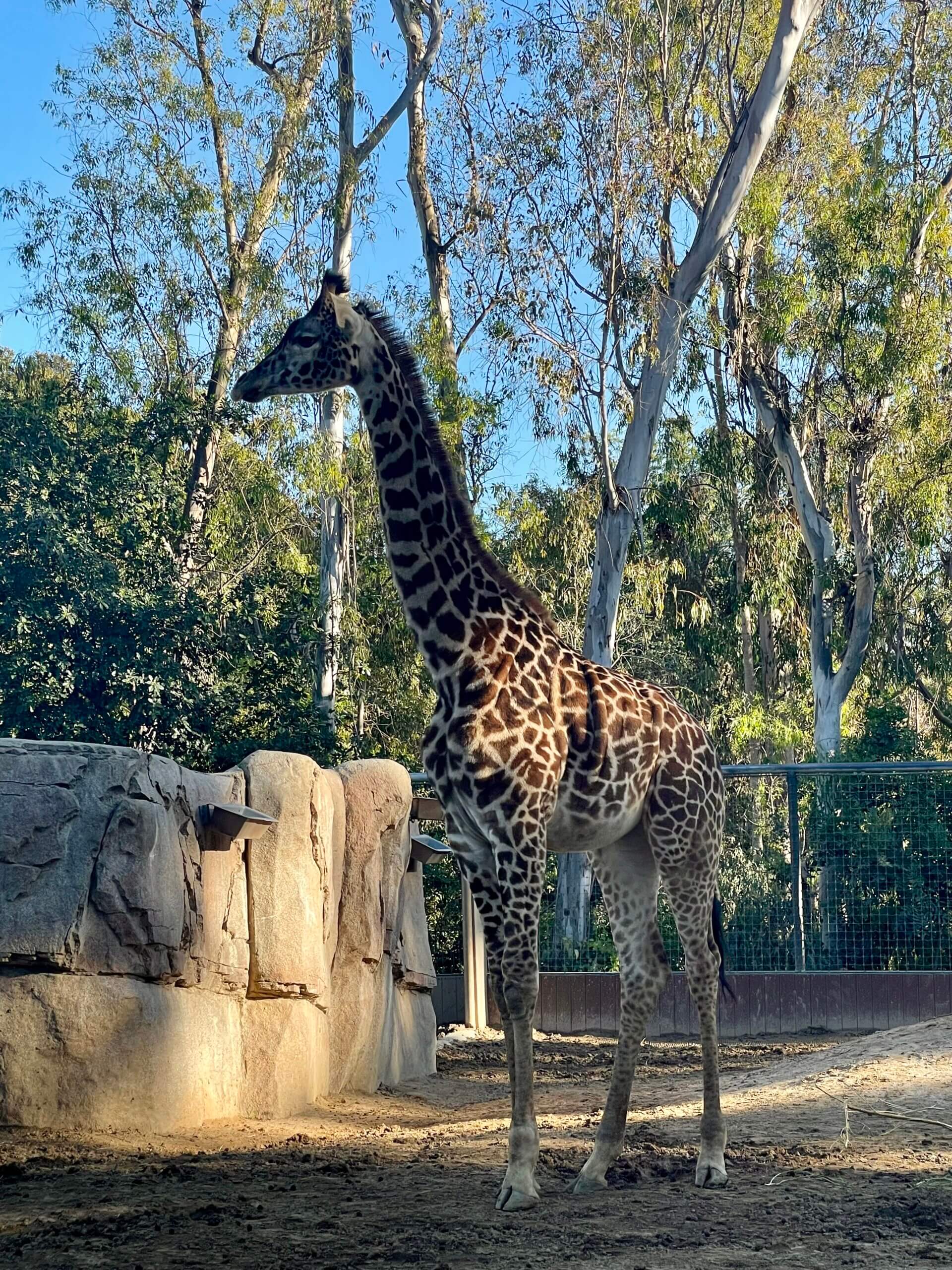
Imagine poaching this beautiful baby?
Much of my time at the zoo was pleasant, as described. But seeing some animals hit differently than others. The koalas perched in trees didn’t worry me, but the elephants, their makeshift obstacle courses to “keep them busy” made me a bit queasy. The polar bears, whose real habitat is shrinking by the second out in the wider world, sit in a muddy puddle in front of a see-through fish tank while kids press their faces to the glass. Someone told me I should feel better about them since they’re not safe in the real world, either. That seemed to me a pretty ignorant argument since it is humans who cause climate change and its detrimental effects and also humans who lock up animals in muddy, fish tank-filled pens. Seeing a tiger—A fucking tiger!—Its muscular body, enormous paws, majestic fur, its steel jaw and sharp teeth, a mouth made for killing. Watching this creature pace around an enclosure while small children shouted to get its attention made my pulse quicken and my heart ache. The order of things is wrong. We should be afraid of her, not taunting.
And as much fun as I was having on my trip to the zoo, this feeling crept in more and more. I felt guilty for being there. I wondered how much of the zoo’s proclamations of protecting wildlife were true and how much was the same greenwashing that detergents and food corporations use. I wondered, as I walked through the lush foliage of a beautifully manicured zoo: Is this ethical? Is this different than Seaworld? Are zoos necessary?

A fucking tiger.
Ethics of Zoos & Aquariums(?)
Feelings
With hit streaming series like Tiger King, Oscar-bait documentaries like Blackfish, and Instagram influencers flaunting their exotic “pets” like tigers and leopards, the internet age has brought (warranted) alarm over animals in captivity. Not every enclosure is the same, and surely there is a difference between legitimate zoos and aquariums and roadside animal hoarders or wealthy “collectors” stealing animals from the wild. I know this logically, but still manage to feel the ick thinking of zoos and aquariums. So I set out to find the differences and answer the questions for myself. Is it okay for animals to be in captivity? Are zoos and aquariums ethical? Am I okay with participating in this?
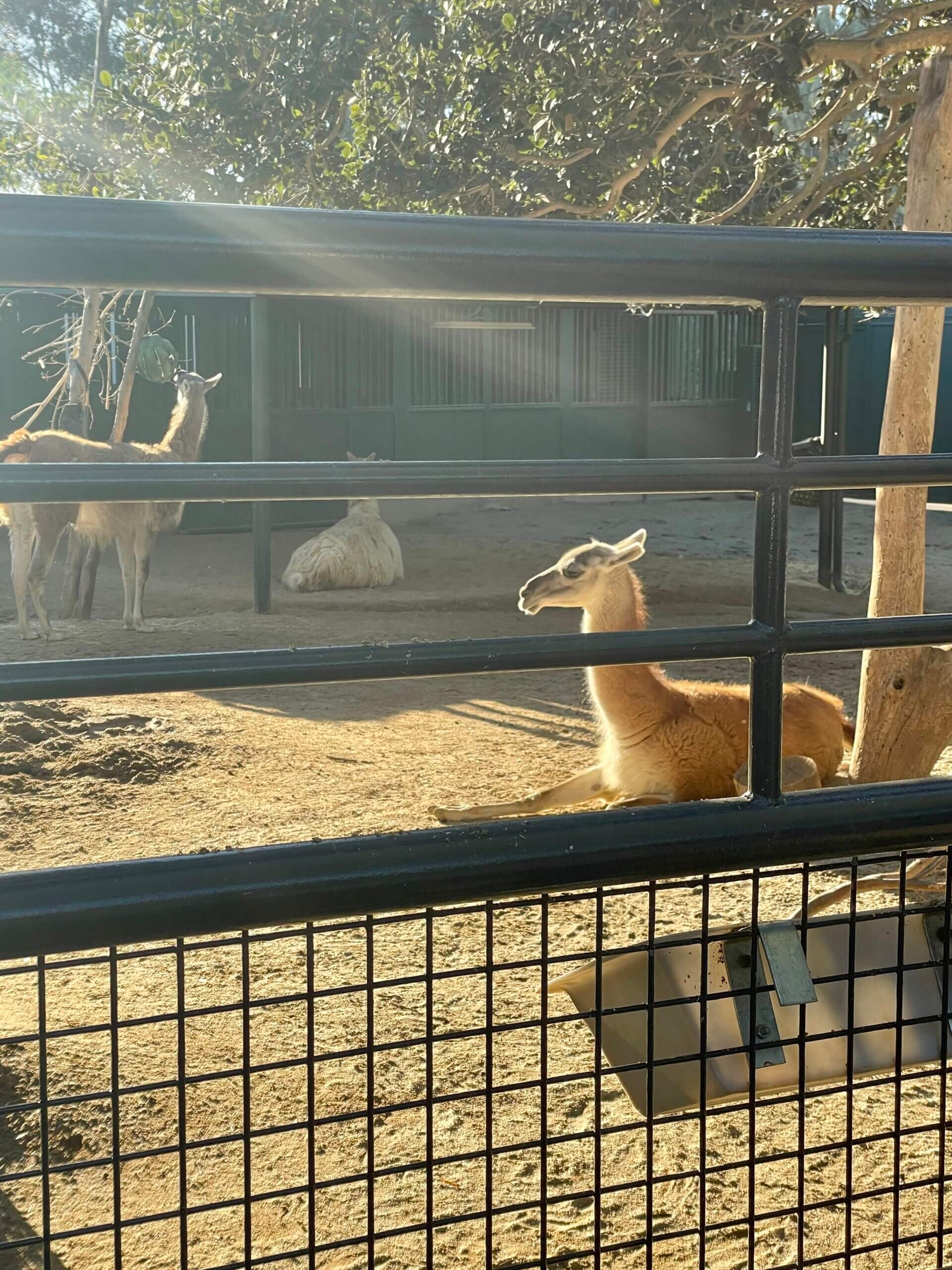
Is this llama chilling or depressed? Caged or content?
Freedom
In the years since the 2013 smash hit documentary was released, Blackfish has endured some criticism. Did interviewees misspeak? Was opinion slated as fact? Do we really know enough about the minds of Orcas to make the claims made in the film? I don’t know the answers to these questions with certainty, but in human endeavors, we almost never get it 100% right. That being said, I won’t be caught dead at a SeaWorld park. The film had something to do with my aversion, and so did my whale watching experience in Victoria, BC. Shows like Tiger King reinforced it and seeing the saddest petting zoo on the face of the Earth in middle-of-nowhere Rhode Island did, too.
But the real problem for me might come from within. I’m a person who cares deeply about personal freedom. It’s the thing that moves me—literally, through the sky for work. It keeps me traveling. It keeps me single. It makes life difficult sometimes, the unbridled pursuit of freedom (while also trying to live a normal life and form meaningful relationships?) It makes things complicated.
I simply cannot help but look at them, the animals, like I look in the mirror.
“Don’t you want to be free?”
“Is this enough for you?”
Humans are shitty sometimes, but it is so easy to have empathy for animals. They’re just doing what they’ve always done. What they’re created to do. And we make a mess of things for them in the world, then we lock them up to gawk at or to protect. I feel personally affronted by this. “Of course they want out.” “No one likes a cage!” and it’s like I’m talking with my therapist and not strolling through a zoo on a sunny Tuesday afternoon.
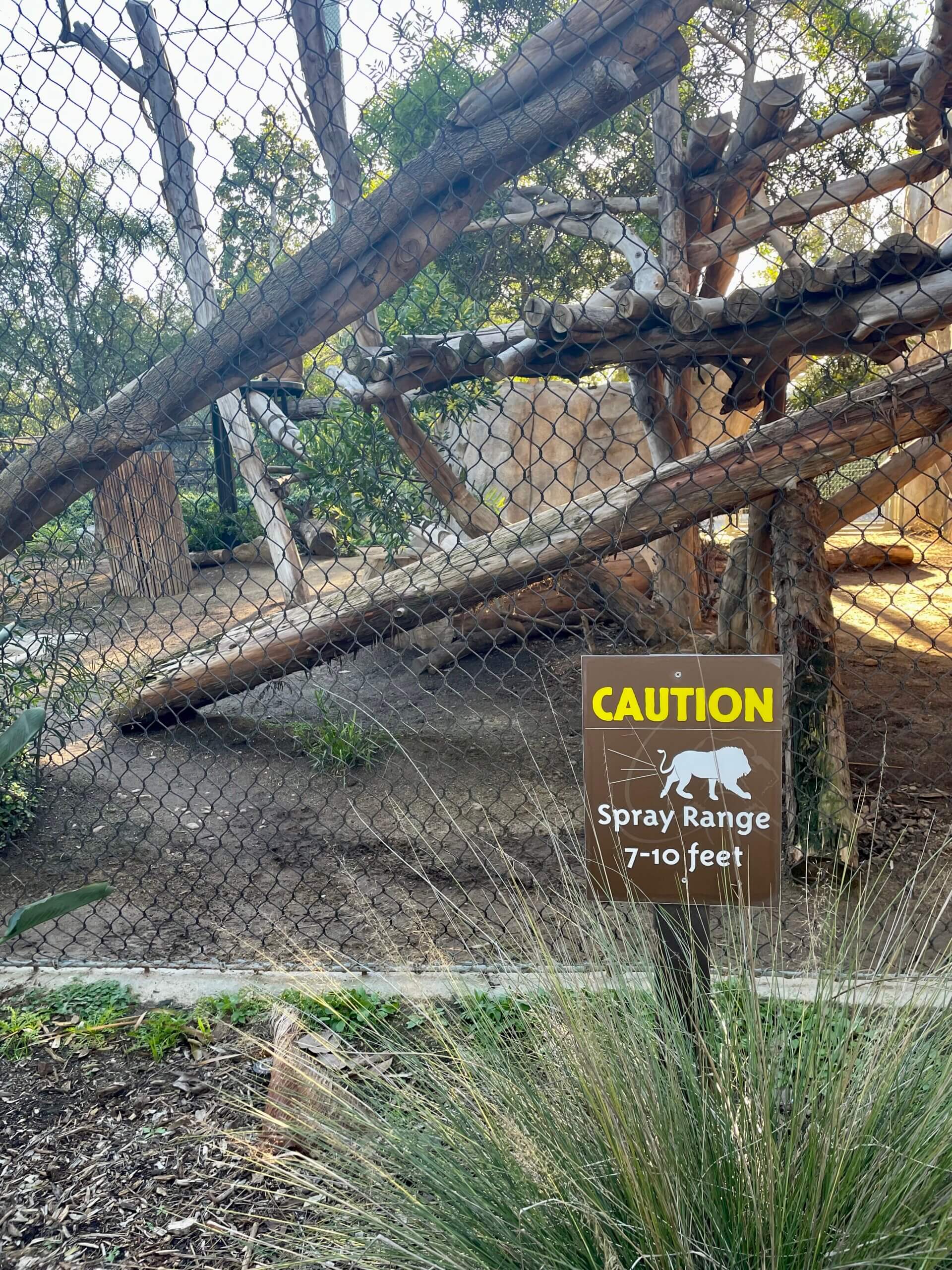
That's one way to deal with captivity...
The Good from the Bad
The good news, for those of us who are on the fence, is that there are some indicators to look for—some differentiating factors to help you tell the good from the not so good.
1. Accreditation
Is the zoo or aquarium accredited? In the U.S., the Association of Zoos and Aquariums, or AZA conducts reviews and inspections to ensure set standards are met at individual institutions. This indicates better environment and treatment of the animals. You can find a full list of AZA accredited organizations at https://www.aza.org/.
If you’re looking to visit a zoo or aquarium outside the U.S., try checking the World Association of Zoos and Aquariums, or WAZA. https://www.waza.org/.
2. Nonprofit Status
Is the zoo or aquarium a nonprofit?
The San Diego Zoo Wildlife Alliance is a legitimate 503c nonprofit organization whose mission is ‘saving species worldwide by uniting our expertise in animal care and conservation science with our dedication to inspiring passion for nature’. The New England Aquarium in Boston is also a 503c(3) non-profit org.
SeaWorld, by contrast is a publicly traded for-profit entertainment business (ticker SEAS). SeaWorld does, however, have a non-profit arm called SeaWorld & Busch Gardens Conservation Fund. It was established in 2003 and, according to their site, has provided $18 million in grants to 1,200 organizations.
3. What are they doing?
(Besides displaying animals?)
You can check any zoo or aquarium’s website, and should be able to see a list of projects they are working on. For example, the San Diego Zoo has successfully bred and reintroduced California Condors into the wild, a species that was on the verge of extinction. They have worked with fertility technology to undergo a groundbreaking breeding effort for the nearly extinct northern white rhino.
Before visiting, check the institution’s website to see what specific conservation projects they are working on to help animals and the environment.
4. Are the Animals Working?
One of the big criticisms of SeaWorld (besides the whole concrete tanks for sea giants thing) is that the animals were essentially working at the park. Much like circus animals, they were doing tricks for food to entertain people. This brings about questions of ethics since the animals cannot consent to working and are not paid.
Check out the zoo or aquarium you’re visiting. Are the animals working to entertain? Or are they simply going about their business and being observed by visitors?
5. How does it feel?
Does the place seem clean, sanitary, and decent? Are there large enclosures with vegetation to mimic the natural environment? Or are there tigers in someone’s muddy backyard? This is where your gut comes in. If it doesn’t feel right, maybe you’re patronizing the wrong place.
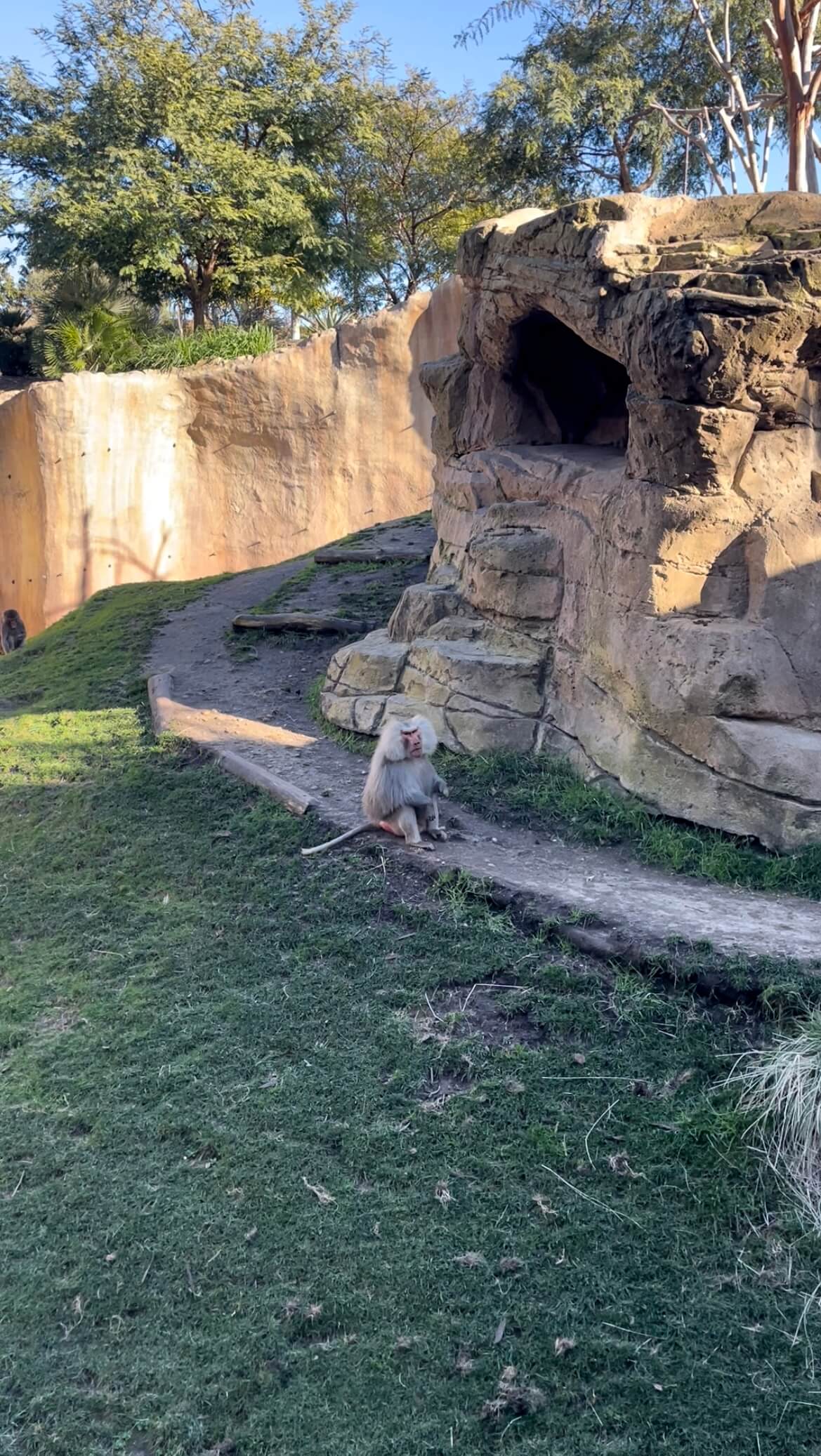
This guy is definitely not working.
Ethical Arguments for Zoos & Aquariums
Exposure
I heard something one time that gave me pause and made me think in a more nuanced way about animals in captivity. It was an interview on a radio program. I cannot remember if the subject was a zoologist or a wildlife specialist or a conservation officer, but they worked with animals in some capacity. He said that his desire to work with animals, to study and serve and protect them, came about as a child… from visiting zoos.
I think often about how much representation matters. How you don’t quite believe something is true or possible until you see it with your own eyes. I didn’t know, for example, that I would ever be an ultramarathon runner until I volunteered at a race and saw real people out there running 100 miles. And now I’m training for my first 50-miler. There is something to this. Exposure is important. Being able to see these animals up close is different than seeing pictures of them in a book. It can spark a curiosity, set the tide for the next wave of zoologists or biologists or conservationists or big animal veterinarians.
I’m going to counter my own point by noting how many well done nature documentaries are out there on streaming services. They are full of facts, beautiful images and video footage of animals in their natural habitat. And they often come with a soothing narrational voice.
Not everyone has the means to travel, to go on safari or ice-cold whale watches. Should only the fortunate and well-off be able to glimpse these creatures up close?
I do not know, honestly.
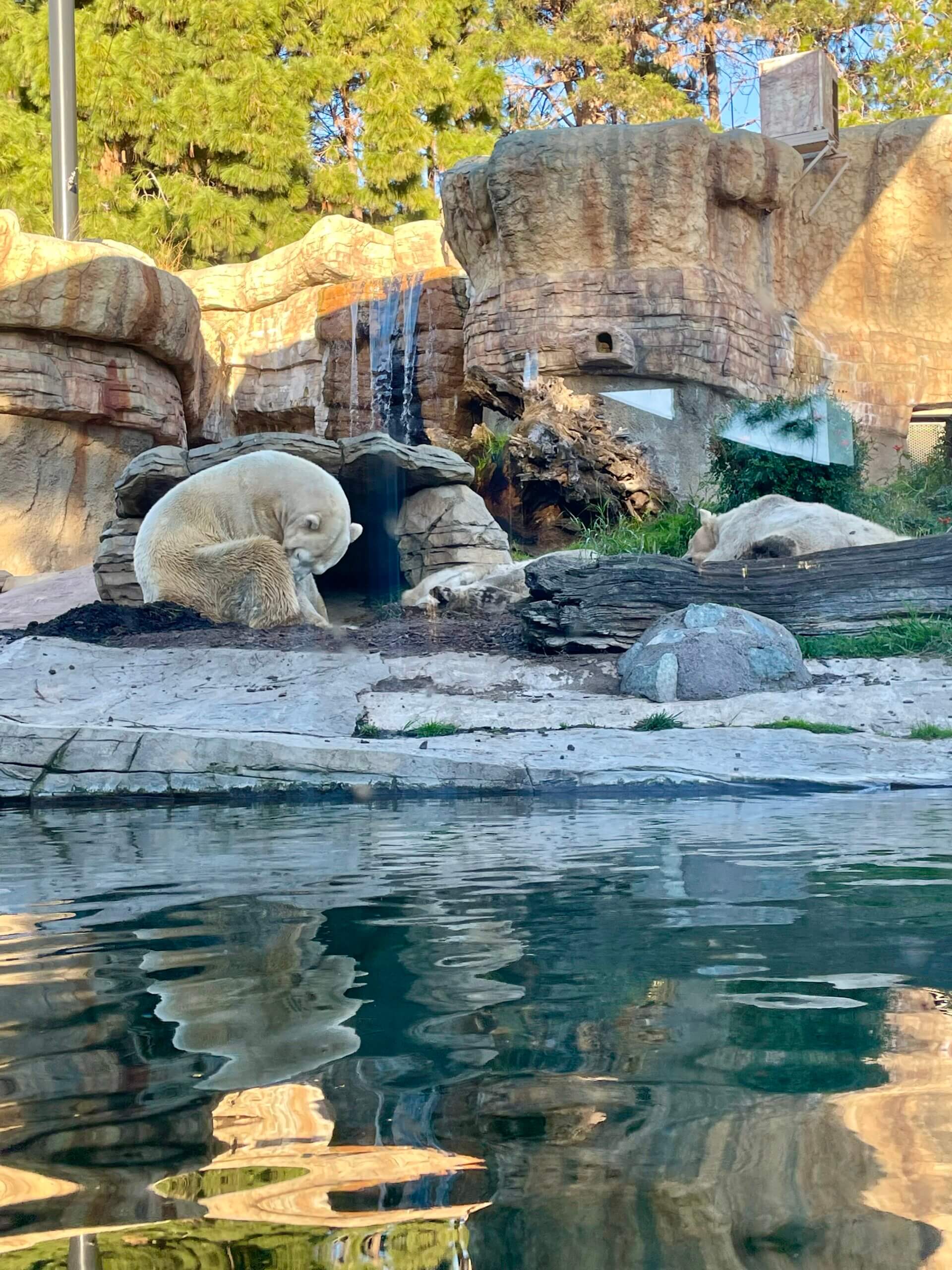
Apparently these polar bears had good reason to be at the zoo.
Rehabilitation & Reintroduction
The next argument for why zoos and aquariums are ethical places is the work they do in rehabilitation and repopulation of vulnerable species.
Zoos can take in injured animals. Or ones confiscated by Border Patrol or Fish & Wildlife Services, such as Baba the Pangolin. Pangolins are poached for their scales and meat in Asia and the Phillipines. Baba was illegally smuggled and confiscated on US soil. Where did he end up? The San Diego Zoo. There, he was nursed back to health and lived to the ripe old age of 10—the oldest pangolin ever recorded. As it turns out, the three polar bears that made me uncomfortable in the San Diego Zoo had been taken in at the request of Wildlife Services in 1997 after the cubs were found orphaned in the wild, unable to hunt and feed themselves.
Lucas, an African penguin at the San Diego Zoo was given custom-fitted orthotic shoes to help him walk through a painful degenerative foot condition. Munchkin, a loggerhead sea turtle, received successful rehabilitation at the New England Aquarium. She was missing portions of her right front flipper and left hind flipper, probably from an entanglement. She received nine months of rehab in New England and was successfully released back into the wild.
The California Condor repopulation is one of the San Diego Zoo’s best success stories. Black Footed ferrets, Asian wild horses, Ohio River Basin Freshwater Mussels, Golden Lion Tamarin, Karner Blue Butterflies, the Oregon Spotted Frog, Palilas, American Red Wolves, and the Wyoming Toad are all examples of successful reintroduction efforts that have taken place at zoos and aquariums. These species had suffered significant declines, some to near-extinction levels, before accredited institutions stepped in. Read more about reintroduction efforts at aza.org.
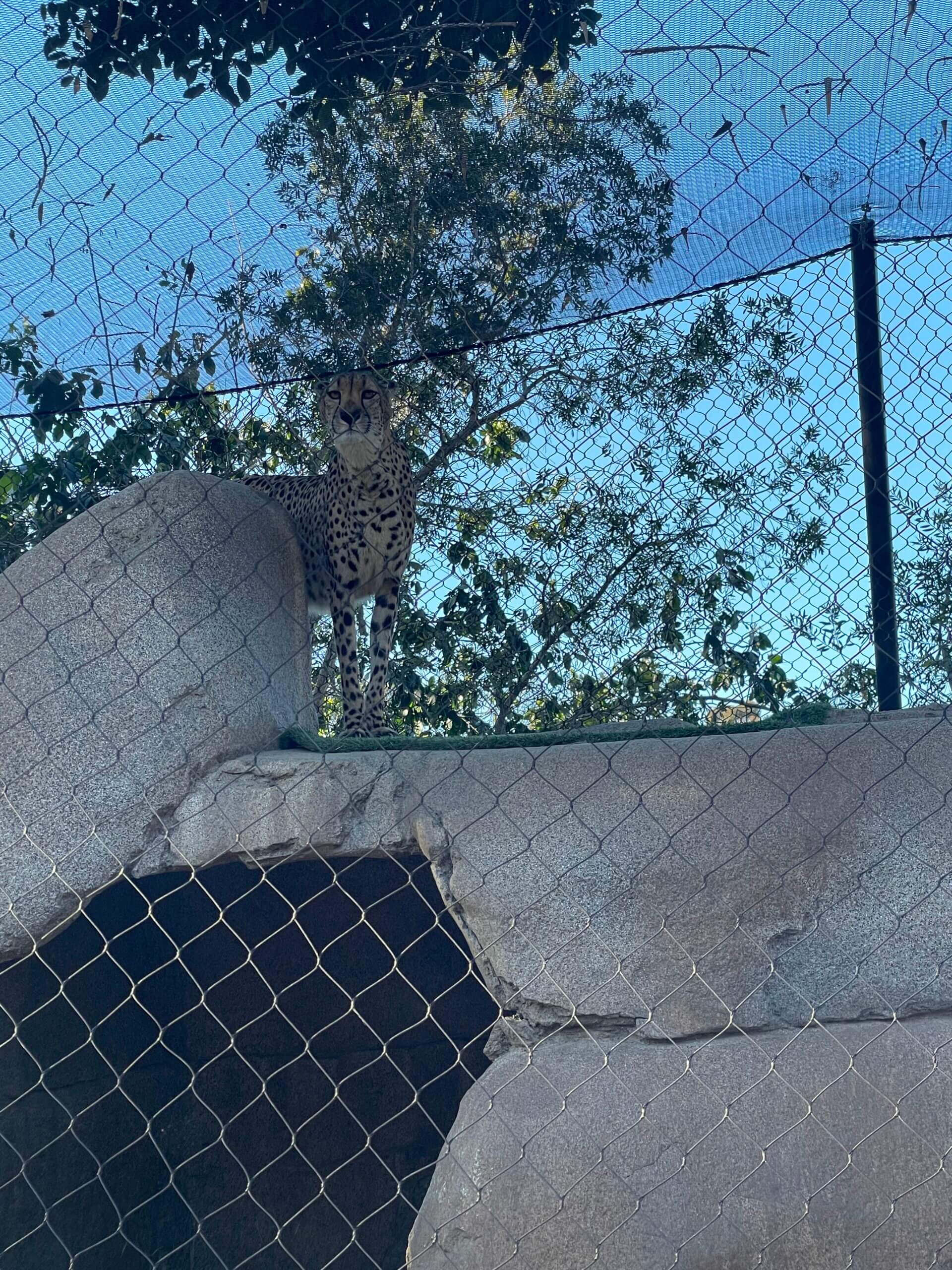
A goddamn cheetah.
Conclusion
The nuances of humans and animals coexisting cannot be “figured out” in one blog post. What I’ve learned through researching is that this issue is the same as most—more gray than black or white. I feel a lot better about my decision to spend an afternoon at the San Diego Zoo after reading about some of the good work they’re doing to protect vulnerable species. I also have some tools in the toolbox to differentiate which animal-centered institutions are ethical and which are exploitative. I’ll be using these tools in the future, and I hope that you will, too, before visiting a zoo, wildlife park, or aquarium.
I still feel a bit weird about captivity. About human intervention in animal life—Not just the saving and housing and repopulation efforts, but also the damage we do to cause the harm in the first place: The farming, the environmental degradation, the overfishing, the poaching, and the human greed, in the form of demand, that fuels it.
What would an ideal world look like? All animals roaming free, living side-by-side with humans? Would we have to turn back time and undo the industrial revolution? Could there ever be a modern world where humans didn’t cause havoc to every plant and animal species, to every ecosystem on earth?
Per usual, I have more questions than answers. But I do know that there is room for improvement in our (humans’) relationship with the natural world.
I hope you enjoyed reading this post, and if you didn’t, then please click over to the San Diego Zoo Live Cameras to see some VERY cute animals in action. A palate cleanser, if you will.
That’s it for now, folx. Hope you have a wild (and ethical) weekend.




Bibhubandana
I really liked your blog post about the San Diego Zoo. It is one of my favorite places to visit in California, and I have been there many times. Your blog post gave me a lot of useful information about the zoo hours, ticket prices, discounts, rules, and what to see and do. You have also given a lot of personal tips and insights that made me more interested and excited to visit the zoo again.